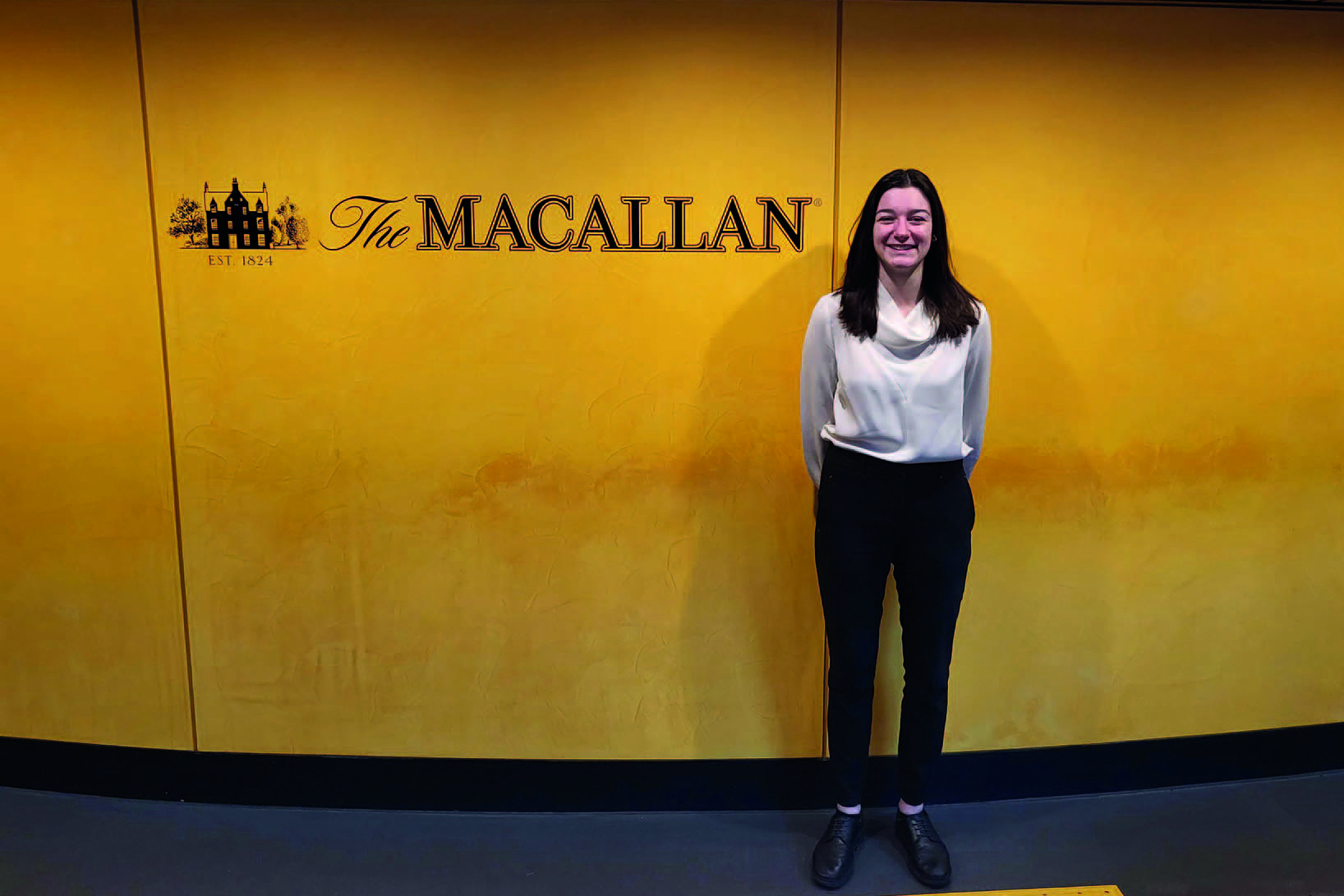State-of-the-art Speyside facility is a stunning combination of form and function
SPEYSIDE distillery The Macallan was already one of Scotland’s most famous whisky producers when it opened its new, state-of-the-art distillery in 2018.
Since then the brand has added ‘luxury hospitality destination’ to a list of accolades that already included ‘world-renowned single malt’.
The high-tech facility, on The Macallan’s Easter Elchies Estate – which has been home to The Macallan since 1824 – has enabled The Macallan to increase its production capacity by up to a third.
Not only that, but the building itself is a modern marvel, designed by architects Rogers Stirk Harbour + Partners to blend into the local hillside when viewed from outside.
Inside, visitors can enjoy a single uninterrupted view of the facility’s stunning still room while sipping single malt at The Macallan Bar.
“The roof was designed to mimic the rolling hills of Speyside and it is made up of 380,000 individual components of Scandinavian pine that all fit together like a jigsaw,” says guest experience host Niamh Taylor as she shows SLTN around the stunning facility.
The still room itself hosts the distillery’s gigantic mash tun, which will process over 650 tonnes of malted barley every week, creating a sugary liquid called ‘wort’ which is then filled into the distillery’s stainless steel washbacks for fermentation.
The Macallan has 21 of these vessels, which will ferment the wort for 60 hours before it emerges as ‘wash’ and enters the stills for distillation.
The distillery has 36 stills in total – 12 wash stills for the initial distillation process and a further 24 spirit stills for secondary distillation.
The stills are smaller than in many of Speyside’s other distilleries and this, explained Niamh, is a crucial part of The Macallan’s signature flavour.


“Because our stills are so small it means the heavier alcohol vapours can rise and come down the lyne arm,” she said.
“That’s what gives us that oily viscous texture to our whisky, which really coats your mouth.”
The new make spirit is then diluted to 63.5% ABV before being decanted into one of The Macallan’s sherry-seasoned casks.
The distillery uses two types of oak for its casks: American and European oak. Both types have been sherry-seasoned in Jerez prior to arriving in Speyside.
While they are both sherry-seasoned oak casks, the European and American wood impart different flavour profiles into the spirit, and allow The Macallan to produce a range of fine single malt whiskies that are each subtly different.
The Sherry Oak range, for example, is comprised of spirit matured exclusively in European oak, which provides a rich, spicy flavour with notes of dried fruits.
The Double Cask range, meanwhile, features whisky from both European and American cask types, bringing sweeter vanilla notes into the mix.
As well as flavour, the casks are also responsible for The Macallan’s beautiful colour.
“All of the colour in The Macallan whisky is completely natural,” distillery manager Russell Anderson told SLTN.


“It all comes from the wood. There’s no caramel added at all.
“That in itself, potentially, costs a huge amount of money. But it’s part of the DNA of The Macallan and that won’t change.”
As the head of production at the distillery, Russell is responsible not only for overseeing the huge quantities of spirit produced every year but ensuring that every drop of that spirit is consistent; meaning each drop that enters a cask today will be the same as liquid produced next month or in a decade.
“There was one objective from the board of directors when we built this place, which was ‘do not change the spirit character’,” he said.
“That was fundamental.”
Fortunately, the cutting-edge technology in the new distillery makes it much easier for Russell and his team to ensure the spirit they are making is consistent.
He explained: “There’s nothing wrong with what we did in the past, but it was very manual.
“And it was down to you taking a measurement or me having a look at a sight glass.
“But now it’s consistently repeatable time and time again.
“Which is great, because now we are able to produce the same spirit time and time again, we are now able to predict with more confidence than we had in the past how the maturation process will work.”
And quality isn’t the only area technology is helping with.
The Macallan’s parent company, Edrington Group, is dedicated to reducing its carbon footprint, and The Macallan is moving towards becoming entirely carbon neutral.
The amount of information provided by the state-of-the-art production equipment has enabled the distilling team to reduce the amount of water it uses during the production process.
“The process water for mashing and for reducing the spirit comes from four bore holes just down the brae,” explained Russell.
“I can see on a daily basis how much we’re taking, how we’re using it. It’s really positive how much data we can examine now. And that helps make decisions to drive down water usage. If you can’t measure you can’t really reduce.”
Elsewhere, The Macallan sends its ‘draff’ – the material left over from the mashing process – to a nearby biomass plant, with the distillery then utilising steam from the plant to power its stills.
Edrington is also partnering with energy company EDF to construct a new solar facility to be built nearby, which will provide additional energy for the distillery.
“From a sustainability point of view, a carbon-neutrality point of view, the drive here is to use less and less gas,” said Russell.
“All these things add up and are really important.”
The expansion and innovation happening across the industry is something Russell is particularly excited about – and something The Macallan, in particular, is well known for, whether in its production processes or product range.
“Innovation in a traditional industry is hugely important,” said Russell.
“If you stand still you stay still. You’re just left behind.”


























